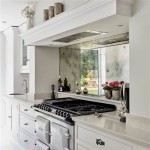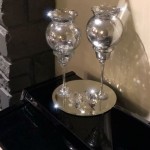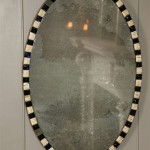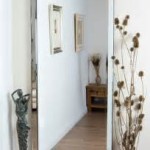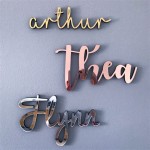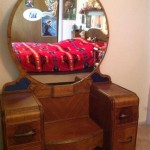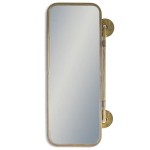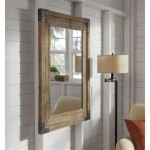Mirrored Herringbone Tile Backsplash: A Comprehensive Guide
Mirrored herringbone tile backsplashes offer a unique blend of classic pattern and reflective brilliance, creating a visually striking focal point in any kitchen or bathroom. This increasingly popular design choice provides an opportunity to add depth, light, and a touch of glamour to a space. This article explores the various aspects of incorporating a mirrored herringbone backsplash, from material selection to installation and maintenance.
Material Choices
While the herringbone pattern itself remains consistent, the "mirrored" aspect can be achieved through various materials. Authentic mirrored tiles, typically made of glass with a reflective backing, offer the most dramatic shine and light reflection. However, metallic tiles, such as stainless steel or polished aluminum, can also create a similar effect with different textural and color nuances. Ceramic and porcelain tiles can also mimic the mirrored look with specialized glazes, providing a more budget-friendly and durable alternative.
Considering Size and Shape
The size and shape of individual tiles within the herringbone pattern significantly impact the final aesthetic. Smaller tiles create a more intricate and busy pattern, while larger tiles offer a bolder, more contemporary feel. Rectangular tiles are the traditional choice for herringbone, but other shapes, such as elongated hexagons or parallelograms, can be used for a more unique and modern interpretation. Careful consideration of tile dimensions is crucial for achieving the desired visual impact and ensuring the pattern scales appropriately with the size of the backsplash area.
Installation Considerations
Installing a mirrored herringbone backsplash requires meticulous planning and execution. The reflective nature of the material highlights any imperfections in tile alignment or grout lines. A professional installer experienced with intricate tile patterns is highly recommended. Proper surface preparation is essential, ensuring a level and clean substrate for optimal adhesion. Thin-set mortar specifically designed for glass or metal tiles should be used, and grout color should be carefully chosen to complement the reflective surface without detracting from the overall design.
Maintenance and Cleaning
Maintaining the pristine appearance of a mirrored herringbone backsplash requires regular cleaning to prevent water spots and smudges. Gentle cleaning solutions and soft cloths are recommended to avoid scratching the reflective surface. Avoid abrasive cleaners or scrubbing pads, as these can damage the finish. Promptly wiping up spills and splashes can also help maintain the shine and prevent staining. Regularly inspecting the grout lines for any signs of cracking or discoloration is also important to prevent water damage behind the tiles.
Lighting and Reflection
One of the primary benefits of a mirrored herringbone backsplash is its ability to enhance the natural light within a space. Careful consideration of lighting placement can maximize this effect, creating a brighter and more open feel. Under-cabinet lighting can highlight the reflective surfaces and accentuate the herringbone pattern. Natural light sources, such as windows, should also be considered when planning the design. Strategically placed mirrors can further amplify the reflective qualities of the backsplash, creating an illusion of greater space.
Design Compatibility
Mirrored herringbone backsplashes can complement a variety of design styles, from classic to contemporary. They pair well with minimalist aesthetics, adding a touch of glamour without overwhelming the space. In more traditional kitchens or bathrooms, mirrored tiles can add a touch of updated elegance. The versatility of this pattern allows for seamless integration with various color palettes and materials, from natural wood cabinetry to sleek stainless steel appliances.
Cost and Budget
The cost of a mirrored herringbone backsplash can vary significantly depending on the chosen material, tile size, and installation complexity. Authentic mirrored tiles tend to be more expensive than metallic or ceramic alternatives. The intricacy of the herringbone pattern also adds to the installation time and labor costs. It is crucial to establish a realistic budget early in the planning process and explore different material options to find a balance between aesthetics and affordability.

Mirrored Herringbone Backsplash Tiles Tile Design Mirror

Herringbone Mirrored Backsplash Design Ideas

Antiqued Mirror Backsplash Design Decor Photos Pictures Ideas Inspirati Antique Herringbone Tile

Mirror Herringbone Backsplash Antique Tiles Kitchen

Antique Mirror Kitchen Backsplash Transitional New York By Allison Eden Mosaic Studios Houzz Ie

Paris Gray Beveled 4x12 Mirror Tile Tilebar Com

Elegant Herringbone Glass Mirror Tiles

Mirrored Herringbone Backsplash Tiles Contemporary Kitchen

Satori Skylight Beveled 11 In X Mirrored Glass Herringbone Patterned Wall Tile 0 85 Sq Ft Piece The Department At Com

3x6 Beveled Mirror Subway Tile In Paris Gray Tilebar Com

